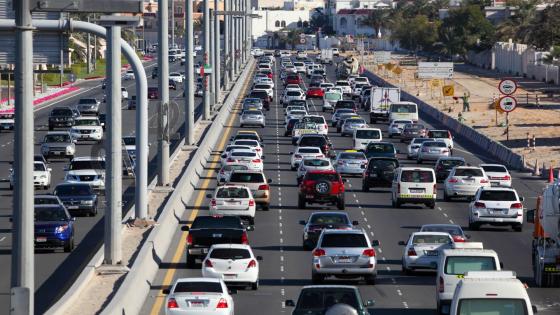Approximately one million residents in the affected areas will directly benefit from the project when the new line launches in 2029.
 Double-digit rises in rent and property prices are anticipated in Dubai’s premier neighborhoods, including International City, Silicon Oasis, Ras Al Khor, Mirdif, Al Warqa, and others, which will be connected by the forthcoming Blue Line of Dubai Metro.
Double-digit rises in rent and property prices are anticipated in Dubai’s premier neighborhoods, including International City, Silicon Oasis, Ras Al Khor, Mirdif, Al Warqa, and others, which will be connected by the forthcoming Blue Line of Dubai Metro.
Approximately one million residents in the affected areas would directly benefit from the project when the new line goes into service in 2029.
Nine important neighborhoods, including Mirdif, Al Warqa, International City 1 and 2, Dubai Silicon Oasis, Academic City, Ras Al Khor Industrial Area, Dubai Creek Harbour, and Dubai Festival City, will be connected by the over 30-kilometer Dubai Metro expansion, which was unveiled on Friday.
Experts in the real estate sector predict that in the upcoming years, more and more people will start moving to these neighborhoods and favor the locations that will connect to the Blue Line.
The metro line will cut down on commuters’ travel time and costs, therefore Ayman Youssef, managing director of Coldwell Banker, anticipates a significant increase in demand for the neighborhoods connected to the Blue Line.
The predicted increase in prices and rents might be anything from 10% to 25%. Since the market is concentrated on high-quality, integrated communities, we may predict a bigger increase in Dubai Creek Harbour if the current trend continues. Youssef stated that Dubai Silicon Oasis is the second most affordable neighborhood for middle-class residents.
Springfield Properties CEO Farooq Syed anticipates a 10–15% growth in some regions that will be connected to the Blue Line.
“Due to Metro connectivity, there is a great deal of demand in Dubai Marina and JLT, which explains why rents—even in older buildings—are significantly higher. He stated, “We are going to witness a large increase in rentals and prices in locations like International City, Al Warqa, Al Jadaf, Ras Al Khor, and Silicon Oasis. These areas saw a modest fall in demand due to a lack of public transportation.
Giving an example, he noted that despite the ease of access to Business Bay, Media City, and Internet City, districts like Karama and Bur Dubai continue to have strong demand because of their metro connectivity.
surpassing other domains
According to Farooq Syed, Blue Line will also aid in meeting the 2040 plan’s 5.8 million population goal because the city requires reasonably priced lodging. “Prices where metro touches have gone up significantly and are getting out of reach. Additionally, Dubai has to have fast connectivity and high-quality, reasonably priced homes in order to draw in top talent.
According to Wael Makarem, senior market strategist for Mena at Exness, traditionally, neighborhoods that are reasonably close to metro stations have performed better than other neighborhoods and have seen rent and price increases more quickly.
“The average annual increase in residential prices in Dubai between Q1 2010 and Q4 2022 was 24.1 percent, with annual peaks of 43.8 percent in certain areas. This performance could be repeated along the Blue Line for those who live within a 15-minute walking distance of a metro station.” Additionally, during downturns, these localities typically enjoy more resilient price levels, according to Makarem.
densely inhabited regions
According to Makarem, the new metro line may have the most effect on rentals and prices in less expensive or more crowded regions because the infrastructure will make them more accessible to a wider range of residents who may require public transportation.
In all of the locations where the new metro line will be constructed, prices and rents may climb more quickly in direct proportion to how close to metro stations they are, as walking distance may continue to be a crucial factor. Greater increases may also be seen in areas where there is a shortage of residential and commercial space. The arrival of the metro line may have accelerated International City’s price increases, which have been higher than those in Silicon Oasis and Mirdif over the previous six months, with an average monthly increase of 0.98 percent versus 0.55 percent and 0.67 percent, respectively.






